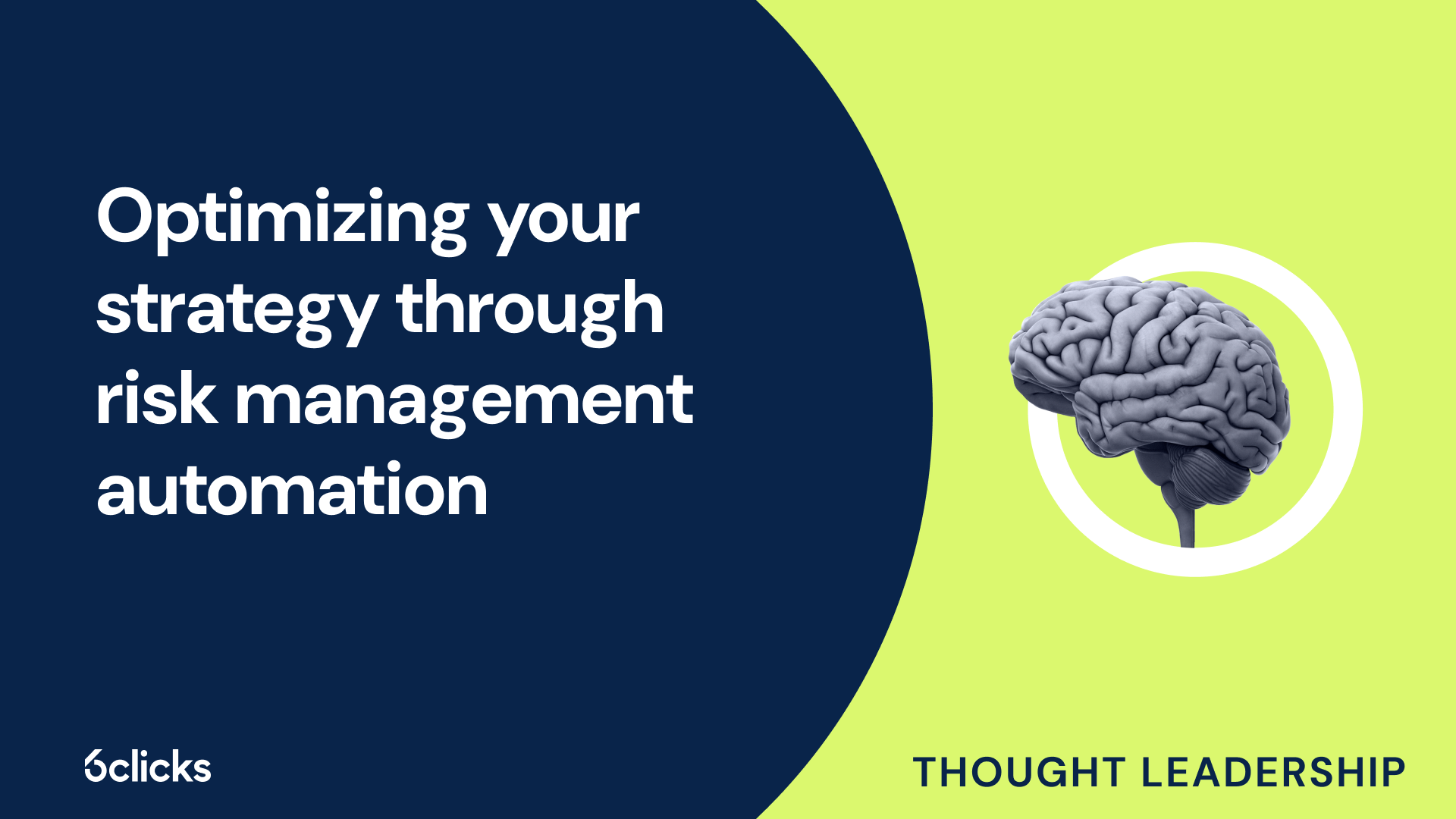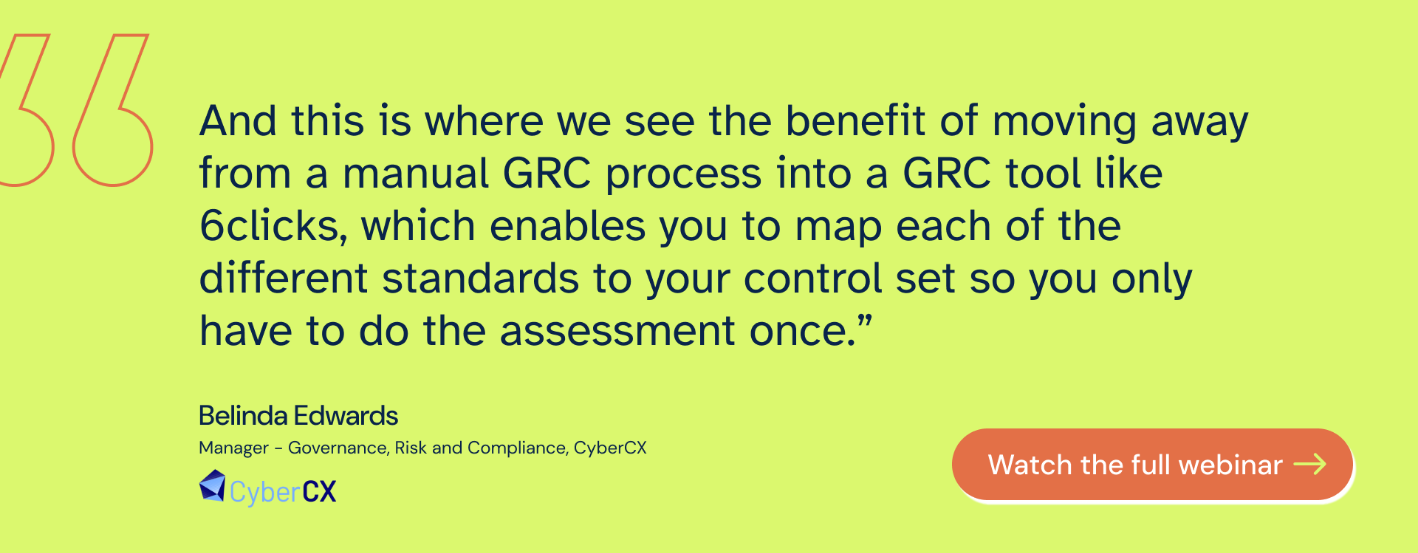Traditional risk management methods often rely on spreadsheets, manual tracking, and static reports. These strategies are not only error-prone but also increase security risks, hinder timely response to critical threats, and prevent organizations from maintaining compliance with evolving regulatory requirements. Risk management automation offers a smarter, more scalable solution that enables an organization to proactively identify and address potential risks, enhance decision-making, and improve overall business resilience. In this article, we’ll explore the benefits of risk management automation and how businesses can implement it to streamline their approach.
The need for automated risk management
In today’s fast-paced digital landscape, manually managing risks poses several challenges:
-
Time inefficiencies – Manual processes require significant time and effort, delaying critical decision-making.
-
Human errors – Data entry mistakes and inconsistencies increase the risk of inaccuracies.
-
Limited scalability – As businesses grow, manual processes struggle to keep up with the increasing complexity of risk factors and regulatory demands.
-
Reactive rather than proactive – Traditional risk management often identifies issues after they have occurred rather than preventing them.
-
Increased risks – Manual risk management makes businesses more vulnerable to unexpected disruptions and financial losses.
By integrating automation into risk management, businesses can address these challenges and create a proactive, efficient strategy.
What is risk management automation?
Risk management automation refers to the use of advanced technologies such as artificial intelligence (AI), machine learning, and data analytics to identify, assess, and mitigate risks in real time. It replaces traditional manual processes with automated workflows, dashboards, and predictive analytics, allowing businesses to manage risk more effectively.
Automated risk management solutions can track compliance, monitor cybersecurity threats, and assess operational risks continuously. These tools streamline processes, improve accuracy, and enhance decision-making by providing organizations with up-to-date risk intelligence. By integrating automation into risk management strategies, businesses can proactively address risks before they become critical issues, ensuring greater resilience and operational efficiency.
Benefits of automating risk management
Adopting automation solutions offers several advantages to organizations, enabling them to establish a holistic approach to risk management and compliance. This encompasses:
Enhanced efficiency and accuracy
Automated risk management tools can collect and analyze vast amounts of data in real time, eliminating the need for manual data entry and repetitive tasks. This allows risk managers to focus on strategic decision-making rather than administrative work. The use of machine learning and predictive analytics also accelerates risk identification and assessment based on historical data and external sources. With automation, organizations can minimize human errors and detect anomalies and patterns that might be overlooked in manual processes.
Improved regulatory compliance
Keeping up with regular changes in compliance requirements can be challenging. With automation, organizations can quickly analyze standards and regulations such as ISO 27001, NIST CSF, and DORA, determine gaps in compliance measures, and easily create remediation plans to get ahead of regulatory updates.
Strengthened vendor risk oversight
Monitoring risks associated with third parties such as vendors and suppliers becomes effortless through automation. Activities such as vendor onboarding, security reviews, and risk assessment can be automated and completed within seconds instead of days or weeks, facilitating effective vendor risk management processes.
Continuous monitoring and proactive incident response
Automated risk management systems continuously monitor security controls and external threats. They provide instant alerts when issues are detected, enabling organizations to respond swiftly and mitigate potential disruptions. Automated workflows also facilitate effective incident management and timely remediation.
Streamlined reporting and audit readiness
With centralized dashboards and the ability to generate accurate, up-to-date reports instantly, organizations can retrieve real-time insights into risk exposure, compliance status, and ongoing mitigation efforts. This simplifies regulatory reporting and enhances risk visibility, making it easier for executives to make informed decisions. Meanwhile, automated compliance tracking and documentation help businesses fast-track and maintain audit readiness by ensuring all necessary records and processes are continuously updated and accessible.
Implementing risk management automation
Successfully implementing risk management automation requires a structured approach that aligns with your organization's specific needs and risk profile. By following key steps, businesses can integrate automation seamlessly, improving their risk management strategy.
Step 1: Assess your current risk management process
Before implementing automation, evaluate your existing risk management approach. Identify pain points, inefficiencies, and areas where automation can bring the most value.
Step 2: Choose the right risk management software
Select a solution that aligns with your industry, compliance requirements, and organizational needs. Key features to consider include AI-driven analytics, real-time monitoring, and integration capabilities.
Step 3: Automate risk data collection
Automate assessments to collect risk-related data efficiently, ensuring a comprehensive view of internal and external threats.
Step 4: Automate risk assessment
Use AI and machine learning algorithms to analyze risk data, categorize risks, and assign risk scores, allowing for more accurate and prompt risk assessments.
Step 5: Implement continuous monitoring
Adopt continuous monitoring solutions to track compliance status and security implementation, providing real-time alerts and actionable insights.
Automate risk management with 6clicks
Leverage cutting-edge automation with 6clicks’ AI-powered cyber GRC platform. With 6clicks, you can transform your risk management processes with cyber security and AI solutions for risk assessment and mitigation, regulatory compliance, audit readiness, and more:
-
Automated risk assessments: Automatically identify and categorize risks and automate the creation of risk treatment plans
-
AI-powered compliance: Automate control mapping to multiple frameworks and instantly generate control sets out of policy documents to streamline compliance
-
Advanced incident management: Synchronize incident management and project management workflows through our Jira integration and fast-track incident response through automated task creation
-
Continuous control monitoring: Conduct automated control tests to verify control effectiveness and get real-time recommendations for configuration issues
-
Accelerated audits & assessments: Complete audits and assessments faster by generating responses that align with previous data and compliance requirements
See 6clicks in action by booking a demo below.
Frequently asked questions
What are the main challenges of traditional risk management methods?
Traditional risk management methods rely on manual processes, spreadsheets, and static reports, making them prone to errors and inefficiencies. These approaches slow down decision-making, increase security risks, and struggle to keep up with evolving regulatory requirements. Automation helps organizations overcome these challenges by enabling real-time risk identification, proactive threat mitigation, and improved compliance management.
How does risk management automation improve regulatory compliance?
Automated risk management solutions continuously monitor compliance with industry standards and regulations like ISO 27001, NIST CSF, and DORA. These tools help organizations quickly analyze regulatory updates, identify compliance gaps, and generate remediation plans. By automating compliance tracking and reporting, businesses can reduce the risk of non-compliance and streamline audit readiness.
What are the key benefits of automating risk management?
Risk management automation enhances efficiency, accuracy, and decision-making by using AI-driven analytics and continuous monitoring. It improves vendor risk oversight, strengthens incident response, and simplifies reporting through centralized dashboards. Organizations can proactively manage risks, minimize disruptions, and ensure operational resilience with automated workflows and real-time insights.
Written by Heather Buker
Heather has been a technical SME in the cybersecurity field her entire career from developing cybersecurity software to consulting, service delivery, architecting, and product management across most industry verticals. An engineer by trade, Heather specializes in translating business needs and facilitating solutions to complex cyber and GRC use cases with technology. Heather has a Bachelors in Computer Engineering, Masters in Engineering Management, and a Doctorate in Information Technology with a specialization in information assurance and cybersecurity.










